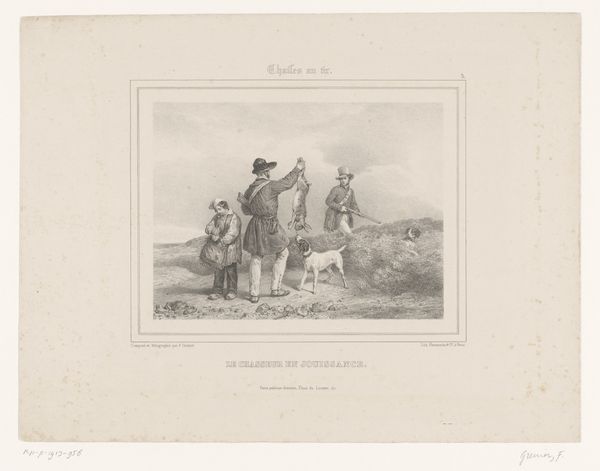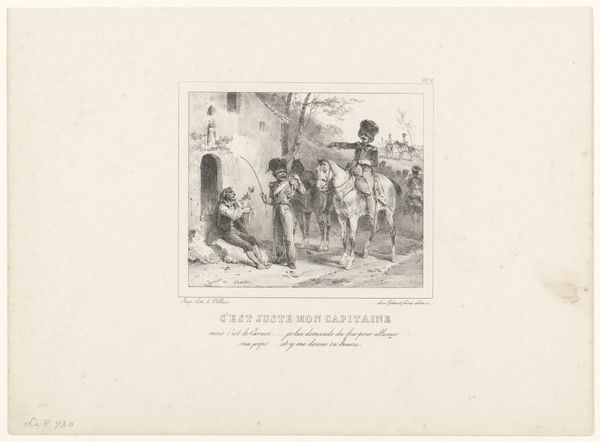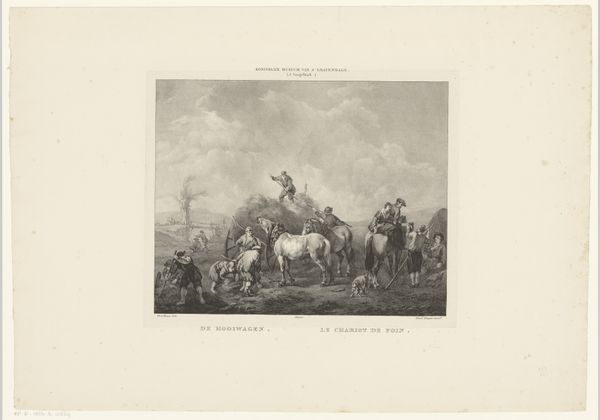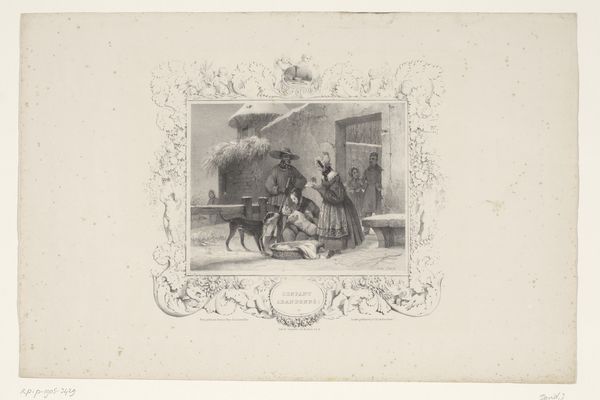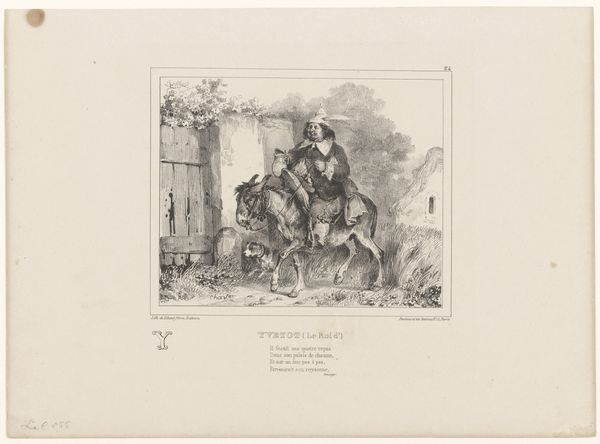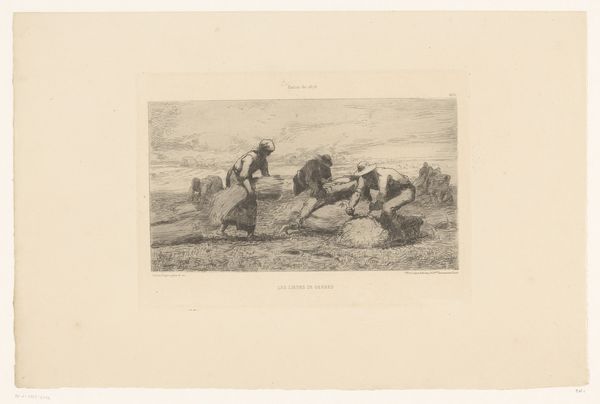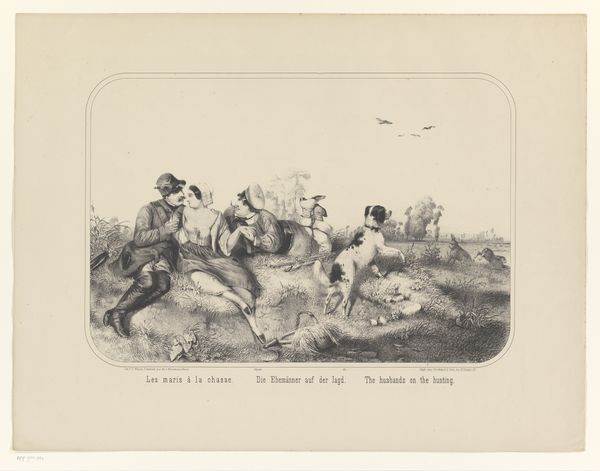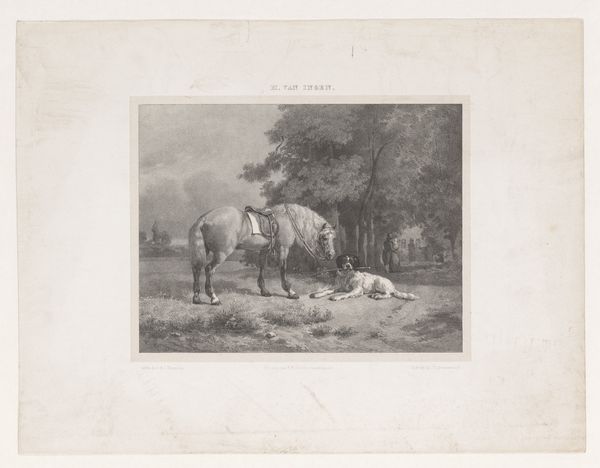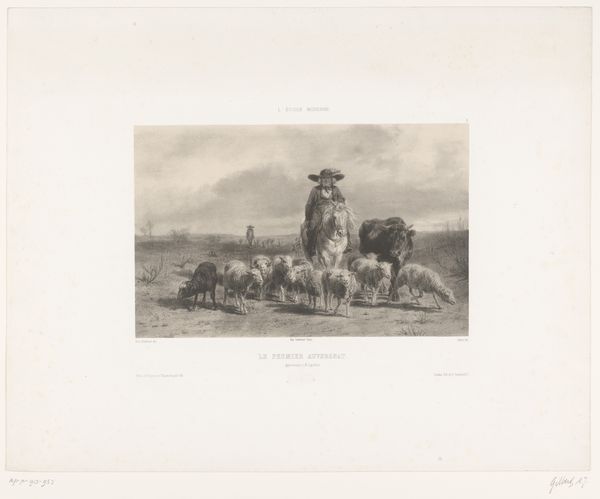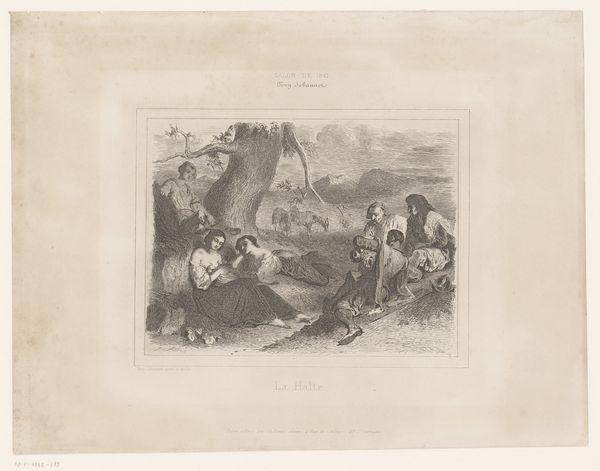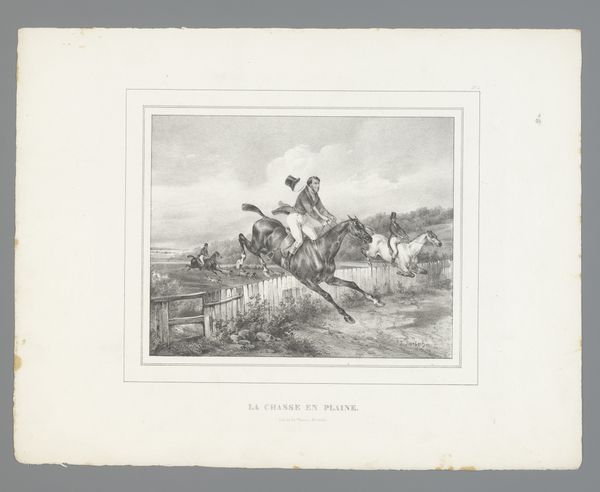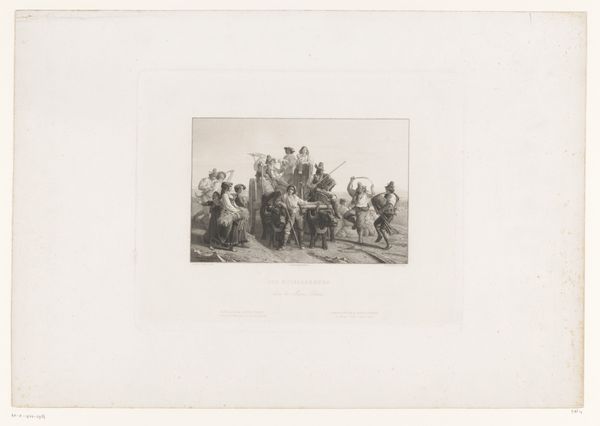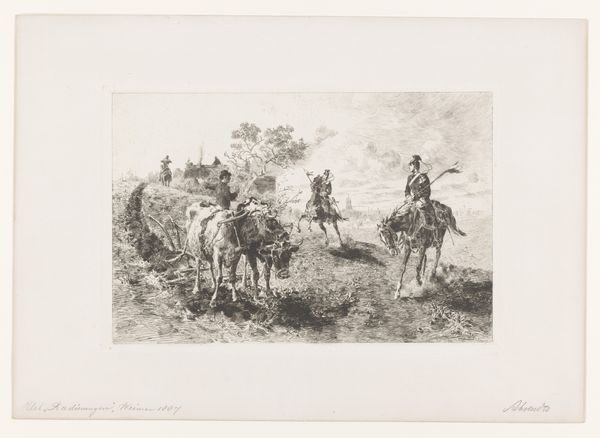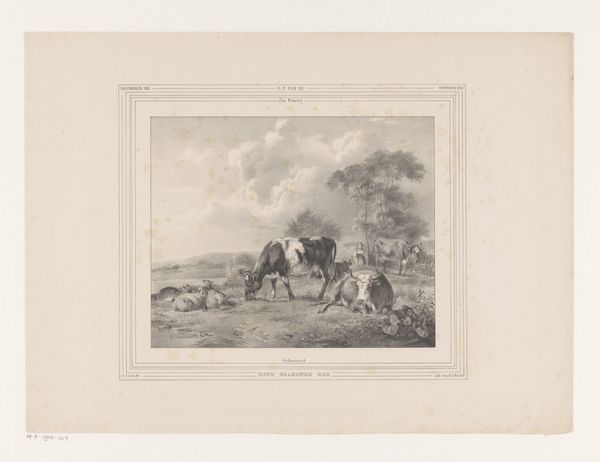
print, engraving
#
narrative-art
# print
#
landscape
#
figuration
#
romanticism
#
genre-painting
#
engraving
Dimensions: height 228 mm, width 294 mm
Copyright: Rijks Museum: Open Domain
Curator: This engraving, titled "Family Returning Home from the City on Horseback," dates back to 1840, created by Hippolyte Bellangé. It is currently housed right here in the Rijksmuseum. Editor: There’s an immediate tranquility to this piece; despite the busy detail in the engraving, there is also something nostalgic and wholesome, it captures a quiet scene on their return, presumably after engaging in labour at market or town. Curator: Absolutely. And when looking closer at its materials, it really shows how printmaking disseminated imagery throughout the 19th century, shaping perspectives and ideas related to this genre and themes. The lines of the figures have been so meticulously formed using steel tools that it highlights a collective process and specialized labor to reach mass production for social consumption. Editor: Considering the political context of 1840 France, these prints offered idealized visions of rural life as cities were undergoing industrialization and facing urban crises, serving perhaps as propaganda during social reform for those facing economic upheaval, creating almost a myth of rural bliss. Curator: That is a keen insight that I've never thought of! In examining the stylistic influence within "Family Returning Home from the City on Horseback" there’s an emphasis on romanticism’s focus on portraying relatable emotions, reflecting shifts that went from royalty to focusing more on depicting people. It feels deliberate to evoke particular sympathies or nostalgic ideals that appeal to growing populations facing significant change. Editor: Bellangé successfully created accessibility to what was at the time popular art; through print production his narratives could easily inform public perception. Looking again closely at the labor and mass-made images, what feelings does it bring up for you regarding that? Curator: While I respect the distribution to people in terms of social democracy, it is difficult knowing the labor was exploited in a class system which perhaps the portrayed rural life seeks to forget in its composition. Editor: It does give food for thought as we appreciate it today, knowing where and how this particular item fits within its contemporary class divisions and broader social history. Curator: It is also another instance showing how print-making shaped societal perspectives through this popular, widely disseminated form which had been distributed and received by audiences of its time. Editor: Very true, it leaves us both acknowledging that these narratives serve to show us just a snapshot, through a fabricated mirror during their time, that perhaps, with our insights of today, has evolved through socio-political reforms, material labour practice changes, or industrial improvements.
Comments
No comments
Be the first to comment and join the conversation on the ultimate creative platform.
